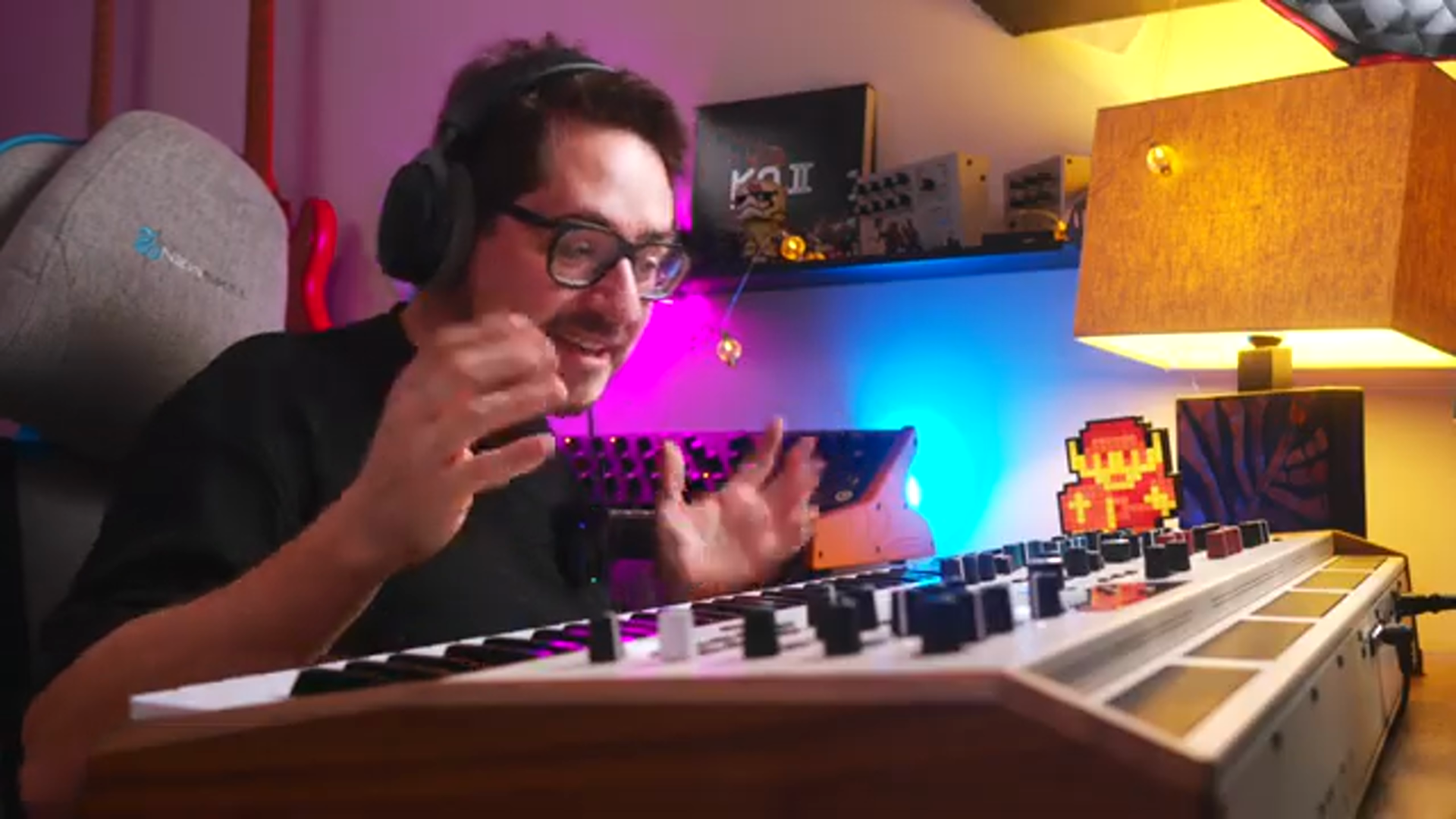Get ready to dive into a world of sound design where the Midlife Synthesist serves up synth patches faster than a downtown food truck churns out tacos. Using the Arturia Polybrute, he crafts three iconic patches that echo through the streets of synth history. It’s a mix of nostalgia and fresh beats, perfect for anyone who’s ever wanted to throw their own sonic block party.

26. June 2025
RILEY
Sound Designs with MidlifeSynthesist: A Synth Odyssey
The Synth Game Show
Midlife Synthesist kicks off his video with a playful twist, inviting viewers to a game where they guess classic synth patches as he recreates them with finesse. His canvas of choice is the Arturia Polybrute 12, which rolls off the line sounding as rich as a vintage mixtape. He aims to recreate three beloved synth patches in less than three minutes, throwing down a challenge that’s part game show, part sonic exploration. Viewers are encouraged to pause and comment with their guesses, turning the viewing into an interactive vibe check. The approach is classic Midlife Synthesist: engaging, fun, and expertly executed in a space that melds education with entertainment.
French Connection: Patch One
Midlife Synthesist dives into the first patch, taking cues from a French song and showcasing the Arturia Polybrute’s capabilities. He kicks things off with a saw wave and adds a second VCO, creating a blend as smooth as a Parisian café au lait. The focus isn’t on replication but on enjoying the ride—sound design as a creative jam session. The ladder filter gets some love, adding grit and soul reminiscent of smoked-out jazz clubs. We hear about the Steiner and ladder filters on the Polybrute, each with distinct sonic touches. Detuning VCOs and introducing FM for that grunge flavor are streetwise moves—tricks that, in true Midlife fashion, blend technique with instinct. The result? A sound that carries the grit of a graffiti-lined back alley, perfect for those who appreciate a touch of the urban underground even in their synth patches.
Deep Dive into Patch Two
The second patch sees Midlife Synthesist pulling out all the stops to show off the Polybrute’s muscle with its twelve voices. He tweaks the sawtooth wave, layers in a full VCO2, and introduces just the right amount of detune. This pallet gives the synth a menacing depth, perfect for an evening stroll under neon city lights. Messing with the filters, he plays with the envelope to craft a sound that’s both massive and intricate, like a sprawling cityscape. Reverb takes center stage, ensuring the sound is as wide as a Chicago skyline. Phaser effects and the cunning use of LFOs keep things fresh and dynamic, proving yet again that a little modulation goes a long way in the world of sonic sculpture. With craftsmanship like a top chef crafting an unexpected taste sensation, the patch unfolds layers of sound that tell their own stories.

"Okay, now I'm going to modulate the cutoff with the LFO. So I'm going to go into mods, and I'm going to go for cutoff here as a destination."
© Screenshot/Quote: Midlifesynthesist (YouTube)
The Simplicity of Patch Three
For the final patch, Midlife Synthesist demonstrates that sometimes less is more. He opts for the square wave to set the stage, crafting a sound that balances simplicity with depth. The Steiner filter’s bandpass mode adds a nasal quality, making the patch flatter like a back-alley jazz player who’s seen a thing or two. And let’s not forget the ever-important modulation—LFOs bring on some gentle wobble, imbuing the patch with a lived-in warmth. Adding a touch of distortion, Midlife pulls out the Germanium flavor, rounding the patch off with a signature snap. The reverb and slow LFO modulation lend a timeless feel, making this patch not just a sound, but a statement. Midlife wraps it up with a nod to sound design as an art form, encouraging viewers to embrace the process, much like a chef jazzing up a classic recipe with a personal twist. This is about capturing a vibe, not a textbook example.
Sound Design: A Craft and a Joy

"I want to thank Arturia for sending me the PolyBrute because this thing is a blast to play on and to sound design on."
© Screenshot/Quote: Midlifesynthesist (YouTube)
Midlife Synthesist wraps up the video by emphasizing that sound design is more than chasing a perfect replication of iconic sounds. With the Arturia Polybrute as his partner in crime, it’s about capturing the essence of what makes those sounds memorable and then going wild with it. He’s singing the praises of using iconic patches as learning tools, a sort of ‘sound cookery’ where you mix and match to taste. The beauty lies in the process, not just the end result. It’s about painting your own picture with sounds, more like mixing colors on a palette than following a recipe to the letter. And remember, gear doesn’t always need to sound exactly like the original to be fun or useful.
Latest articles
Watch on YouTube:
https://www.youtube.com/MidlifeSynthesist
Links from MidlifeSynthesist: